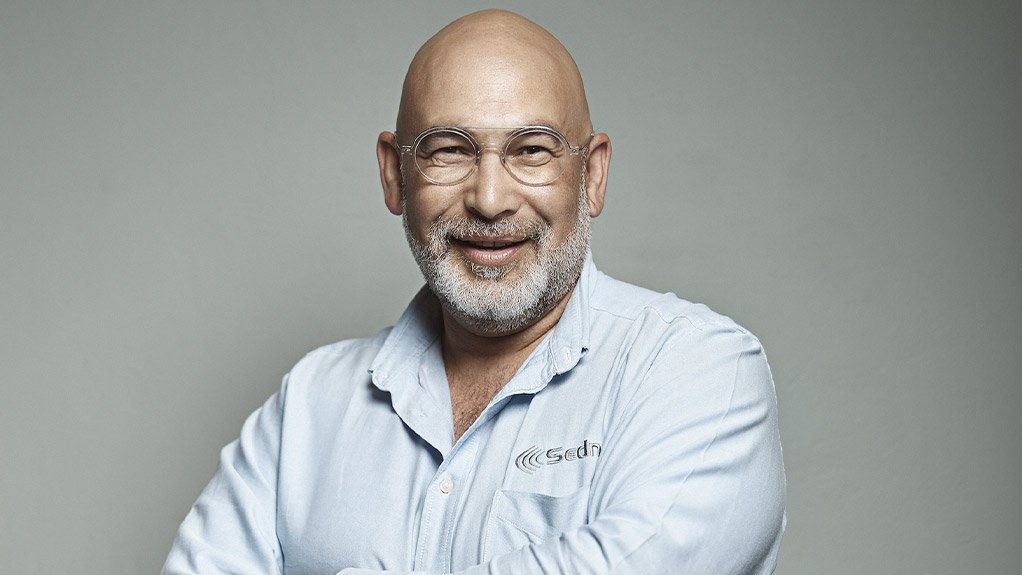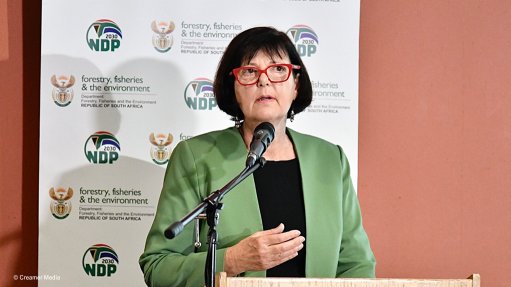Africa’s heavy industry can boost productivity, improve efficiencies with the power of private LTE
This article has been supplied by the author and has not been written or solicited by Creamer Media. It may be available only for a limited time on this website.
By Anton Fester – Sedna Industrial IT Solutions MD
Demand for private LTE (pLTE) is being driven by an increasing thirst for secure and efficient edge connectivity to accommodate the growing need for automation and digital solutions across mining and industrial operations across the globe. There is a significant opportunity for African industrial sectors to grasp this flexible, safe and tailored solution to make inroads into boosting operational efficiencies, protecting workers and driving bottom line growth.
While the rollout of pLTE in Africa’s mining is leading the way, other industries need to catch up and usher in real economic benefits. The double digit market growth in this technology can be attributed to widescale acceptance of these networks in core sectors to support digitalization and automation.
According to Markets and Markets research, the pLTE market is expected to grow from $5 billion in 2022 to $8.3 billion by 2027. Allied Market Research, meanwhile, sees the global pLTE market size, valued at $3.78 billion in 2019, reaching $10.64 billion by 2027, growing at a compound 13.9% from 2020 to 2027.
pLTE works by 4G radios to connect to smart devices and routers. It is a on premise version of public LTE networks, and stands apart from WiFi in that latency and jitter, the death nail of any network, remains constant regardless of the number of connected devices.
In a nutshell, pLTE ensures a seamless move from traditional to high-tech manufacturing and will be particularly suitable to run future facing apps and can be deployed across sectors like heavy industry, plants, ports, oil and gas, transportation, but also in areas like healthcare and education.
Importantly, these networks offer an added layer of end-to-end reliability, security (the independent networks have their own radio equipment) and efficiency (drastically reduced operational downtime).
Just consider some of the use cases to get a picture of the immense benefits in the industrial world. Komatsu, which provides Japanese-engineered mining, construction, earthmoving and utility equipment in South and Southern Africa, has seen a production increase of 255,013 tonnes a year (based on research at three sites) after moving more than 50% of its automated haulage system production sites onto pLTE. Notably, WIFI communications equipment problems per truck operating hour declined by 84.62%.
Significant cost savings add to the benefits at a time when cost pressure is mounting. A case study at an open pit ore mine in Australia, for instance, recorded a 10 million Euro saving after replacing over 150 WIFI trailers with just 6 LTE “cell on wheel” units. Operational cost savings were impressive – a 90% drop in “stop” events, which would normally have disrupted operations. Fuel consumption declined by 7% and fleet utilization improved by 1.3%. Truck productivity increased by 75 hours per truck per year and 1.5 million tonnes a year, which is quite amazing. At the end of the day, the company reported top line boost of more than 50 million Euro a year. Absolutely breath-taking numbers.
Notably, less human intervention and error translated into increased worker safety as the system was able to ensure people were alerted in time and kept away from high-risk areas.
Similar benefits are possible in Africa. For instance, at a project in the Northern Cape we are involved in, 70 WIFI radios were replaced with just three, more efficient pLTE radios.
pLTE, of course, does require a long-term approach to investment, as apart from the upfront equipment costs, they need to operate on licensed spectrum bands and this requires partnerships with mobile network operators, who own these bands after acquiring them through an auction process. Future deployments will see these partnerships lasting 5-10 years or even longer.
These investments can be a challenge for many businesses, but it is important they take a long-term view and factor in the future savings and innovation shift that can be achieved. I believe that in the future, pLTE networks as a service will be the desired market format.
The power of partnership is one way to overcome the cost hurdle and will be critical to the ongoing growth of pLTE. For instance, in November last year Sedna strengthened its partnership with Nokia to co-operate on the technological advancement and development of Africa’s mining and industrial sectors.
Sedna is already a trusted partner to Nokia on numerous projects and the new partnership expands this further to make Sedna Nokia’s main system integrator for Africa in mining and other industrial applications. This is already seeing best in breed Nokia private LTE networks installed and supported to deliver safer, more efficient, and productive solutions in operational areas above and underground. Sedna will also assist in the solution design and identification of a suitable device ecosystem.
With more demand coming from other industrial users, like original equipment manufacturers (OEM) in SA, I expect to see accelerated growth in the pLTE accelerate going forward.
While pLTE is helping protect and grow Africa’s rich mineral deposit extraction, this will also be a game-changer in turning industrial activity around and opening the door to exciting, innovative solutions that create jobs and help boost growth.
A natural flow is beginning in these spaces and it will go a long way to help overcome challenges. For instance, apps can be deployed to biometrically monitor workers to ensure they are not stressed and at risk. This tech, given power through the private network, reads heart rate, body temperature and then applies algorithms to the data. It will greatly improve communication and how data is harnessed to improve productivity across the operation. It is also great for predictive maintenance, reading information from the tyre pressure monitoring system so that alerts are sent and the pressure can be reduced and in so doing tyre life is prolonged and operational costs decreased. Essentially, this solution is much better for improving the quality of management.
With users increasingly hungry for more data, with the advent of AI and other new apps operating at 5G speeds, the future of pLTE is up.
Comments
Announcements
What's On
Subscribe to improve your user experience...
Option 1 (equivalent of R125 a month):
Receive a weekly copy of Creamer Media's Engineering News & Mining Weekly magazine
(print copy for those in South Africa and e-magazine for those outside of South Africa)
Receive daily email newsletters
Access to full search results
Access archive of magazine back copies
Access to Projects in Progress
Access to ONE Research Report of your choice in PDF format
Option 2 (equivalent of R375 a month):
All benefits from Option 1
PLUS
Access to Creamer Media's Research Channel Africa for ALL Research Reports, in PDF format, on various industrial and mining sectors
including Electricity; Water; Energy Transition; Hydrogen; Roads, Rail and Ports; Coal; Gold; Platinum; Battery Metals; etc.
Already a subscriber?
Forgotten your password?
Receive weekly copy of Creamer Media's Engineering News & Mining Weekly magazine (print copy for those in South Africa and e-magazine for those outside of South Africa)
➕
Recieve daily email newsletters
➕
Access to full search results
➕
Access archive of magazine back copies
➕
Access to Projects in Progress
➕
Access to ONE Research Report of your choice in PDF format
RESEARCH CHANNEL AFRICA
R4500 (equivalent of R375 a month)
SUBSCRIBEAll benefits from Option 1
➕
Access to Creamer Media's Research Channel Africa for ALL Research Reports on various industrial and mining sectors, in PDF format, including on:
Electricity
➕
Water
➕
Energy Transition
➕
Hydrogen
➕
Roads, Rail and Ports
➕
Coal
➕
Gold
➕
Platinum
➕
Battery Metals
➕
etc.
Receive all benefits from Option 1 or Option 2 delivered to numerous people at your company
➕
Multiple User names and Passwords for simultaneous log-ins
➕
Intranet integration access to all in your organisation





















